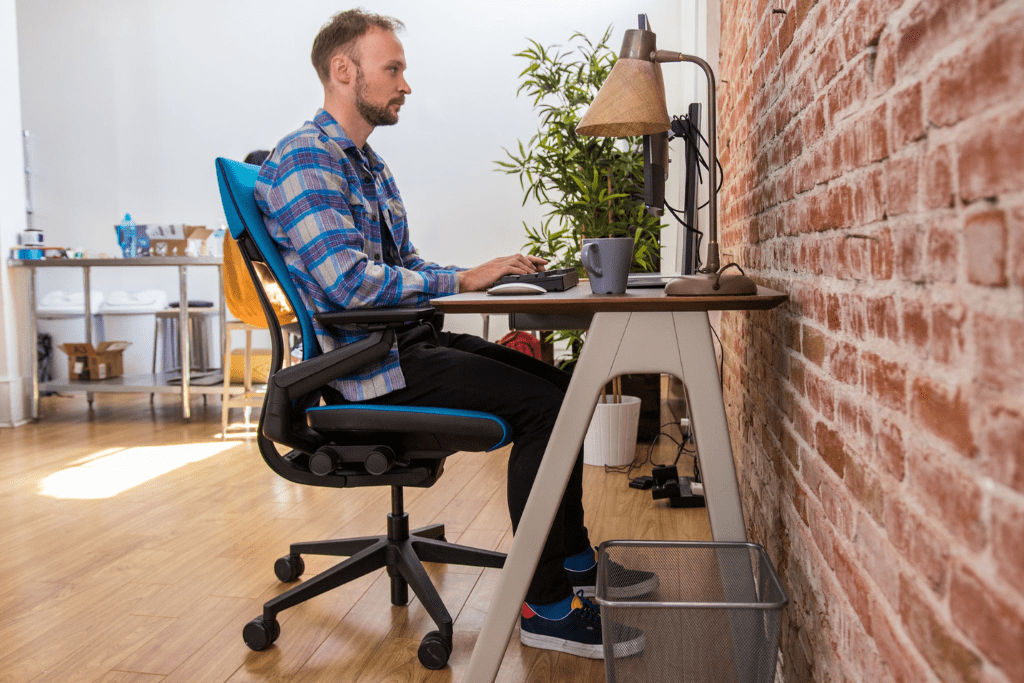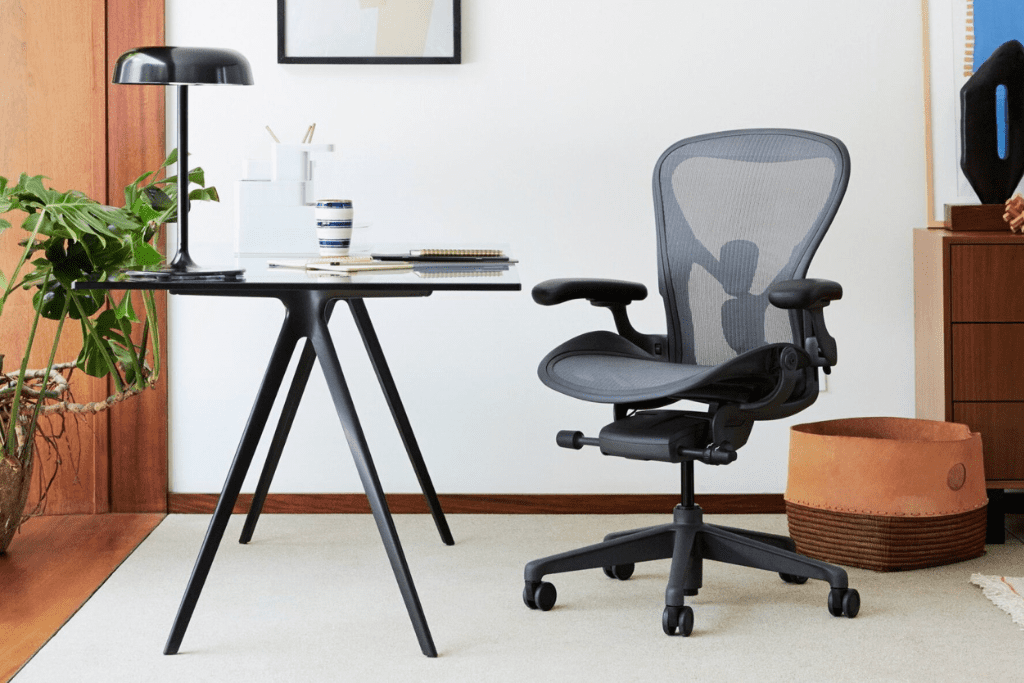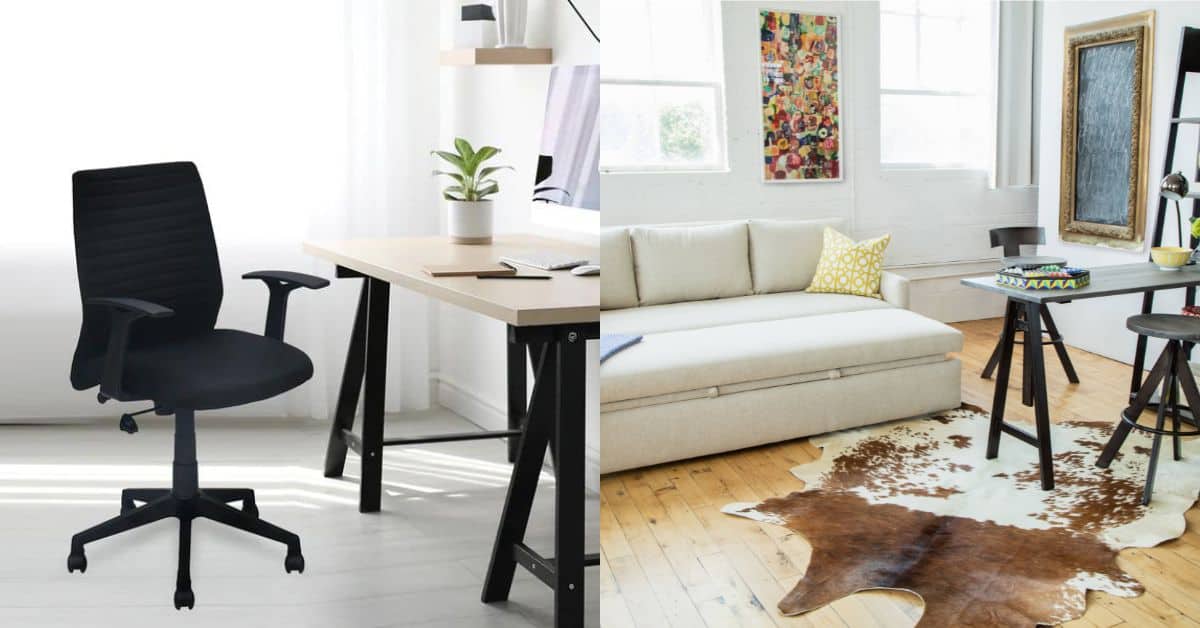This post contains affiliate links.
Last year, I too struggled with choosing between a chair and a couch for my home office. It was a journey of trial and error, seeking the perfect balance between comfort and proper posture for those long work hours. This personal experience has given me insightful lessons that I’m eager to pass on to you.
Chairs are generally better for home offices due to their ergonomic design, promoting better posture and productivity. Couches, while comfortable, may lead to slouching and less focus during work tasks.
But there’s more to consider than just posture and productivity. In the following sections, I’ll dive deeper into the nuances of each option, exploring how they can uniquely fit into your lifestyle and work habits.
1. Posture and Comfort

Understanding the impact of your choice between a chair and a couch is crucial, specially when you are considering for your home office. We’ll explore the ergonomic benefits of chairs and the hidden pitfalls of couches to help you make an informed choice.
How Chairs Promote Healthy Posture
Office chairs, especially those designed ergonomically, play a pivotal role in promoting healthy posture. They are engineered to support the natural curve of the spine, aligning the back, neck, and hips to reduce strain.
Ergonomic chairs often feature adjustable components like lumbar support, armrests, and seat height, allowing users to customize their seating to fit their body dimensions and desk height. This customization is crucial in preventing the common office ailments such as lower back pain and neck strain.
A study in the National Library of Medicine highlighted that employees using ergonomic chairs reported a significant decrease in back pain and an improvement in posture. This data underscores the importance of a well-designed chair in maintaining spinal health and overall well-being in a home office environment.
The Comfort Trap of Couches
While couches may initially seem more comfortable, they often lead to what can be termed as the ‘comfort trap’. Couches, with their plush cushions and deep seats, encourage a more relaxed, slouched posture. This might feel comfortable in the short term but can lead to various health issues over time.
Slouching on a couch for extended periods can cause the spine to curve unnaturally, leading to back and neck pain. The lack of proper support for the lower back, in particular, can result in chronic lumbar pain.
Moreover, this relaxed posture can also lead to reduced lung capacity and decreased oxygen flow to the brain, impacting overall alertness and productivity. Remote workers who have transitioned from couches to ergonomic chairs often reflects these findings, with many reporting significant improvements in both comfort and health after making the switch.
2. Productivity and Focus

It is crucial to understand how our choice of seating in a home office can significantly influence our work output and concentration levels. In this section, we’ll explore the profound impact that chairs have on enhancing focus and the challenges couches present in maintaining it.
The Impact of Chairs on Concentration and Work Output
Ergonomic chair is a tool for enhancing work efficiency. Their design is based on extensive research into human anatomy and workplace behavior. Features like adjustable armrests, lumbar support, and seat height cater to individual needs, reducing the physical discomfort that can distract from work.
A review of 250 ergonomic studies by the Washington State Department of Labor and Industries revealed that ergonomic workstations led to a 75% decrease in lost workdays and a 68% reduction in workers’ compensation expenses.
This data strongly suggests that ergonomic chairs, as a key component of these workstations, can significantly enhance productivity in a home office setting.
The physical comfort provided by these chairs translates into mental focus, allowing for prolonged periods of concentration. This is particularly crucial for tasks that require high levels of cognitive engagement, such as coding, writing, or design work.
Couches and the Challenge of Maintaining Focus
On the flip side, couches, while cozy, present several challenges for maintaining focus. The soft, deep seating that makes them perfect for relaxation is precisely what hinders productivity. This type of seating encourages a slouched posture, which can lead to muscle fatigue and discomfort over time.
The relaxed posture also has psychological effects; it signals the brain that it’s time to unwind, not work. This can make it challenging to enter and maintain a state of flow or deep work.
Furthermore, couches often lack the physical boundaries that a desk and chair provide, making it easier to succumb to distractions like TV, pets, or household chores.
A study by Stress and Health, found that the physical environment of work affects both job performance and job satisfaction. Working from a couch can lead to increased procrastination and a decrease in the ability to concentrate on complex tasks.
3. Space and Style

Selecting the right furniture for your home office is a balance of style and space efficiency. Let’s explore how choosing between a chair and a couch can shape the functionality and aesthetic of your workspace.
Fitting Furniture into Your Home Office
When designing a home office, the aesthetic appeal is as important as functionality. The choice between a chair and a couch can significantly influence the overall style and ambiance of the space.
Chairs, particularly modern ergonomic ones, offer a sleek and professional look, aligning well with a more traditional or contemporary office aesthetic. They come in various designs, allowing for a seamless integration into your existing decor.
Couches, on the other hand, add a touch of comfort and informality. They can transform a rigid office space into a more inviting and relaxed environment, ideal for those who prefer a less conventional workspace.
This choice heavily depends on personal style and the type of work environment you wish to create.
Space Efficiency: Chairs and Couches Compared
Space efficiency is a crucial aspect of home office design, especially in smaller living spaces. Office chairs are designed with space optimization in mind. They are typically more compact, fitting easily into tight spaces and often featuring adjustable components to maximize space utility. Their mobility, thanks to wheels and swivel features, also adds to their space efficiency, making them ideal for multi-functional areas.
In contrast, couches take up more room and can be challenging to accommodate in smaller offices. They are better suited for larger spaces where their size and style can be fully appreciated without compromising the functionality of the room.
The decision between a chair and a couch should therefore consider the available space and how the furniture piece will interact with the rest of the room.
4. Cost and Longevity

Understanding the cost and how long they last is key when picking a chair or couch for your home office. Let’s look at which option gives you more for your money over time.
Price Comparison: Office Chairs Vs. Couches
| Category | Office Chair Price Range | Couches Price Range |
| Low-End | $50 – $200 | $100 – $500 |
| Mid-Range | $200 – $600 | $500 – $1,500 |
| High-End | $600 – $2000+ | $1,500 – $5,000+ |
- Low-End:
- Office Chairs ($50 – $200): In this range, chairs are basic but functional. They typically lack advanced ergonomic features like adjustable lumbar support or customizable armrests. Ideal for occasional use, these chairs are suitable for those who don’t spend long hours at their desk or are on a tight budget.
- Couches ($100 – $500): Low-end couches are affordable but may compromise on material quality and durability. They can be suitable for casual, short-term seating in a home office but are not designed for prolonged daily use. These couches often have limited support and cushioning, which might not be ideal for maintaining a healthy posture during work.
- Mid-Range:
- Office Chairs ($200 – $600): Chairs in this price bracket offer better ergonomics and are built for longer-lasting comfort. They often feature adjustable settings for height, tilt, and armrests, and may include some form of lumbar support. These chairs are a good balance of comfort, durability, and price for regular home office use.
- Couches ($500 – $1,500): Mid-range couches offer improved quality in materials and construction. They provide better comfort and are more stylish. However, even at this price point, couches may not offer the best posture support for extended work sessions. They are more suitable for a home office where they are used intermittently rather than as the primary seat.
- High-End:
- Office Chairs ($600 – $2,000+): High-end office chairs are the epitome of ergonomic design and comfort. They are made with premium materials and offer extensive adjustability to fit a wide range of body types and work styles. These chairs are an investment, particularly beneficial for those with chronic pain issues or who spend long hours at their desk.
- Couches ($1,500 – $5,000+): At the high end, couches are luxurious and made with top-quality materials. They offer superior comfort and style but are still not ideal for work-related tasks. These couches are more of a lifestyle choice, suitable for a home office that doubles as a living space.
Durability and Maintenance Considerations
Office chairs are built to endure the rigors of daily, prolonged use. They are designed with sturdy materials and replaceable parts, making them a more sustainable option over time. Ergonomic chairs often come with extensive warranties, reflecting their longevity.
In contrast, couches are not typically designed for the demands of a work environment. Prolonged sitting and usage can lead to quicker wear of cushions, fabric, and structure.
Maintenance also plays a role here. Office chairs are generally easier to maintain and repair, with many models designed for easy part replacement. Couches, however, can require more complex and costly maintenance, such as reupholstering or cushion replacement.
Wrap Up
Chairs stand out for their ergonomic benefits, space efficiency, and long-term value, when deciding between a chair and a couch for your home office.
For further guidance on selecting the perfect office chair, especially for lumbar support, be sure to check out my previous article.

